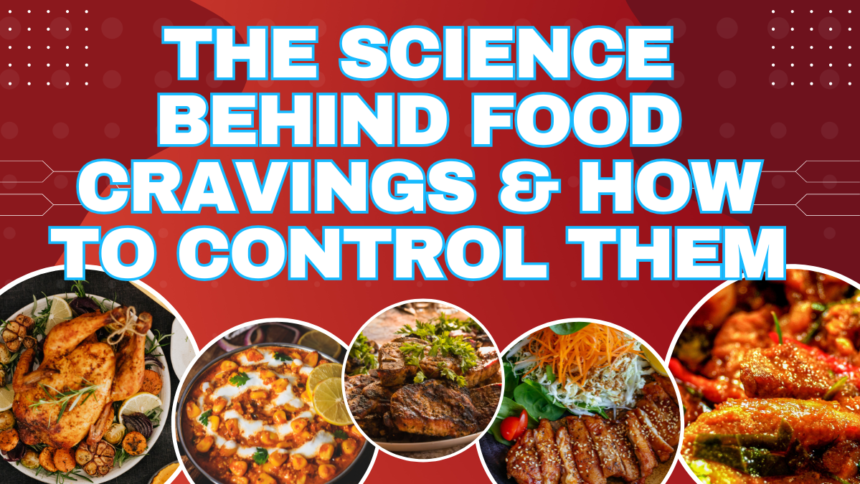Food Cravings : How to Control Them
Ever found yourself suddenly desperate for a chocolate bar at midnight? Or maybe you’ve stared into the fridge, not even hungry, but needing something salty or sweet? Food cravings are a universal experience—but why do they happen, and how can we manage them without guilt?
Turns out, cravings aren’t just about willpower. Science reveals they’re influenced by hormones, emotions, and even gut bacteria. In this post, we’ll break down the real reasons behind food cravings and share practical, science-backed strategies to keep them in check.
Why Do We Crave Certain Foods?
Food cravings are more than just hunger—they’re intense desires for specific flavors or textures. Here’s what’s really driving them:
1. Brain Chemistry & Reward Pathways
When you eat something delicious (especially high-sugar or high-fat foods), your brain releases dopamine, the “feel-good” chemical. Over time, your brain starts associating certain foods with pleasure, making cravings stronger.
- Sugar and fat light up the brain’s reward system similarly to addictive substances.
- Tip: Swap processed sweets for naturally sweet foods like fruit to satisfy cravings without the crash.
2. Hormonal Imbalances
Hormones like leptin (satiety) and ghrelin (hunger) regulate appetite. When they’re out of balance, cravings spike.
- Stress & cortisol: High stress increases cravings for comfort foods.
- PMS & estrogen shifts: Many women crave chocolate or carbs before their period due to serotonin dips.
3. Emotional & Psychological Triggers
Ever reached for ice cream after a bad day? Emotional eating ties cravings to mood.
- Boredom, stress, sadness, or even happiness can trigger cravings.
- Tip: Pause and ask: Am I hungry, or am I feeling something else?
4. Nutrient Deficiencies
Sometimes, cravings signal your body needs something.
- Chocolate cravings? Could mean low magnesium.
- Salty cravings? Possible dehydration or electrolyte imbalance.
Video Credits
How to Control Food Cravings (Without Willpower Alone)
1. Eat Balanced Meals
Skipping meals or eating too little protein/fiber leads to blood sugar crashes—prime craving territory.
- Protein + fiber + healthy fats keep you full longer.
- Example: Swap white toast for avocado toast with an egg.
2. Stay Hydrated
Dehydration is often mistaken for hunger.
- Drink water first when a craving hits—wait 10 minutes.
- Herbal teas (like peppermint or chamomile) can curb sweet cravings.
3. Manage Stress & Sleep
Poor sleep increases ghrelin (hunger hormone) and decreases leptin (fullness hormone).
- 7-9 hours of sleep helps regulate appetite.
- Stress-reducing activities: Yoga, walking, deep breathing.
4. Outsmart Your Environment
- Keep trigger foods out of sight (or out of the house).
- Prep healthy alternatives (dark chocolate instead of milk chocolate, roasted chickpeas instead of chips).
5. Mindful Eating Practices
- Eat slowly—it takes 20 minutes for your brain to register fullness.
- Savor small portions instead of restricting entirely (deprivation often backfires).
When to Seek Help
While occasional cravings are normal, constant, uncontrollable urges could signal:
- Blood sugar imbalances (common in insulin resistance or diabetes).
- Emotional eating disorders (like binge eating).
- Gut microbiome issues (certain bacteria crave sugar!).
If cravings disrupt your life, consider talking to a nutritionist or therapist.
Final Thoughts: Cravings Don’t Have to Control You
Understanding the why behind cravings is the first step to managing them. Instead of fighting them with sheer willpower, try addressing the root cause—stress, sleep, diet, or emotions. Small, consistent changes (like better hydration or protein-rich meals) can make a big difference.
Next time a craving strikes: Pause, hydrate, and ask what your body really needs. You’ve got this!
What’s your biggest craving challenge? Share in the comments—let’s troubleshoot together!


